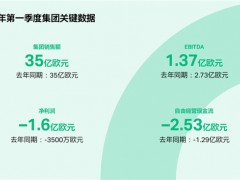盡管美國戰略石油儲備發布了創紀錄的數據,但美國的石油庫存仍徘徊在多年來的低點附近
與經濟周期密切相關的餾分燃料油庫存處于2000年以來的最低水平
經濟放緩可能有助于重新平衡極低水平的餾分油庫存
據美國油價網7月31日報道,盡管美國戰略石油儲備發布了創紀錄的數據,有報告稱過去幾周汽油需求因高油價而減弱,以及經濟放緩,但今年這個時候美國石油庫存仍處于多年來的低點。過去幾個月,商業原油和成品油庫存未能重建,且需求低水平表明汽油和柴油市場在短期內將持續吃緊,這可能會支撐油價。
不過,在美國汽油平均價格在6月中旬觸及每加侖5美元的紀錄高位以后,最近幾周美國汽油需求下降成為市場關注的重點。再加上對經濟衰退的擔憂,WTI原油價格承壓。美國基準原油指數本周比國際布倫特原油指數的折扣幅度達到3年多來最大。
汽油需求下降令WTI承壓,而布倫特原油價格則反映出全球現貨供應緊張,這是受西方制裁以及歐盟將在今年年底前實施的石油禁令的推動。WTI對布倫特原油的3年來最大折扣推動了美國原油出口的激增,在截至7月22日的報告周,美國原油日出口量創下450萬桶的歷史新高。
不過,最近的數據顯示,汽油需求的下降并不像最初看起來那么明顯,美國能源信息署(EIA)公布的數據顯示,美國過去4周平均汽油需求仍呈上升趨勢。
盡管有跡象顯示WTI原油價格面臨下行壓力,但美國多年來的石油庫存(有些產品是幾十年來最低的)是油價的一個強勁看漲因素,不過這并不意味著它可能超過市場對經濟衰退的擔憂。
EIA數據顯示,截至7月22日的最新報告周,美國商業原油庫存減少450萬桶。美國原油庫存降至4.221億桶,比今年同期的平均水平低約6%。汽油方面,上周庫存減少330萬桶,比5年同期平均水平低大約4%。包括柴油在內的餾分油是美國今年最吃緊的市場,目前的庫存水平比5年季節性平均水平低23%。
根據路透社市場分析師約翰·肯普匯編的數據,美國與經濟周期關系最為密切的餾分燃料油庫存處于2000年以來的最低水平。到目前為止,第三季度的餾分油庫存增加不到100萬桶,這是一個異常低的庫存增加速度。肯普指出,這是過去40年里最少的餾分油庫存之一。
肯普認為,經濟放緩可能有助于重新平衡這些極低水平的餾分油庫存,但這種重新平衡可能需要更深入、更持久的經濟低迷。
事實上,美國經濟正在放緩。美國商務部7月28日公布的預估數據顯示,繼第一季度下降1.6%之后,美國第二季度GDP下降0.9%。理論上,GDP數據符合經濟衰退的一個常見定義——連續兩個季度的GDP收縮。
但政策制定者堅持認為,此次“技術性”衰退并非大范圍衰退,因為經濟中的許多領域仍在走強,尤其是勞動力市場,而推高通脹的外部條件是獨一無二的。
美國財政部長上周末在美國全國廣播公司(NBC)的《會見媒體》節目上說:“當一個月創造近40萬個就業崗位時,這還不算衰退。”
美國政策制定者承認美國經濟放緩,但美國經濟并沒有出現全面衰退的跡象。
美聯儲主席在本周美聯儲宣布再次加息75個基點后的新聞發布會上說:“我認為美國目前沒有陷入衰退,原因是有太多的經濟領域表現得太好了。”
他說:“去年美國的經濟增長非常高,百分之五點五。我們本來預計增長會放緩。現在也有更多的放緩。”鮑威爾重申了美聯儲的“軟著陸”目標。
他補充說:“如果你想想經濟衰退到底是什么,那就是很多行業普遍衰退,持續幾個月以上的衰退,其中有很多具體的測試。而現在的情況似乎并非如此。”
李峻 編譯自 美國油價網
原文如下:
Demand Destruction Could Help America Refill Its Oil Inventories
· America’s oil inventories are hovering around multi-year lows despite releases from the SPR.
· Distillate fuel oil inventories, which are most closely related to the economic cycle, are at the lowest for the time of year since 2000.
· An economic slowdown could help rebalance very low levels of distillate stocks.
· U.S. petroleum inventories are still sitting at multi-year lows for this time of the year despite record releases from the Strategic Petroleum Reserve (SPR), reports of weakening gasoline demand over the past weeks because of high prices, and a slowing economy. Commercial crude and product stockpiles have failed to rebuild over the last few months, and the low levels point to continued tight markets for gasoline and diesel in the short term, potentially supportive of oil prices.
· Yet, emphasis has been placed on a fall in U.S. gasoline demand in recent weeks after the national average price hit a record $5 a gallon in the middle of June. This, combined with fears of a recession, have weighed on WTI Crude prices. The U.S. benchmark hit this week its widest discount in over three years compared to the international Brent Crude benchmark.
· This faltering demand for gasoline has weighed on WTI, while Brent prices reflect tight global physical supplies, buoyed and Western sanctions, as well as the European Union ban oil set to be implemented before the end of this year. The biggest discount of WTI to Brent in three years is driving a surge in U.S. crude oil exports, which hit a record high of 4.5 million barrels per day (bpd) in the reporting week to July 22.
The most recent data, however, shows that gasoline demand destruction isn't as clear-cut as it initially looked, with the four-week average gasoline demand still trending upward, according to EIA data.
Despite signs of downward price pressures on WTI Crude, the lowest U.S. petroleum inventories in years—for some products in decades—are one strong bullish factor for oil prices, although it's not a given that it could outweigh market fears of recession.
In the latest reporting week to July 22, commercial crude oil inventories declined by 4.5 million barrels, the EIA data showed. At 422.1 million barrels, U.S. crude oil inventories are about 6% below the average for this time of the year. In gasoline, inventories decreased by 3.3 million barrels last week and are about 4% below the five-year average for this time of the year. Distillates, which include diesel, have been the tightest market this year, with current stockpile levels 23% below the seasonal five-year average.
Distillate fuel oil inventories, which are most closely related to the economic cycle, are at the lowest for the time of year since 2000, according to data compiled by Reuters market analyst John Kemp. So far in the third quarter, distillate stockpiles have risen by less than 1 million barrels, an unusually low pace of inventory builds. This is one of the tiniest distillate inventory builds of the past four decades, Kemp notes.
An economic slowdown could help rebalance those very low levels of distillate stocks, but the rebalance could need a deeper and longer downturn in activity, Kemp argues.
Indeed, the U.S. economy is slowing down. The advance estimate from the U.S. Department of Commerce showed on Thursday that GDP contracted by 0.9% in the second quarter, following a 1.6% decline in Q1. In theory, the GDP data met one common definition of a recession—two consecutive quarters of GDP contraction.
But policymakers insist the 'technical' recession is not a broad-based recession because many areas in the economy are still going strong, especially the labor market, and external conditions pushing inflation higher are unique.
"When you're creating almost 400,000 jobs a month, that is not a recession," U.S. Treasury Secretary Janet Yellen said on NBC's Meet the Press last weekend, a few days before the GDP data was released.
Policymakers admit there is a slowdown, but the U.S. economy doesn't present broad-based signs of a recession.
"I do not think the U.S. is currently in a recession. And the reason is there are just too many areas of the economy that are performing too well," Fed Chair Jerome Powell said at a press conference this week after the Fed announced another 75-basis-point hike in key interest rates.
"Really the growth was extraordinarily high last year, 5 and a half percent. We would have expected growth to slow. There's also more slowing going on now," Powell said, reiterating the Fed's goal of a "soft landing."
"If you think about what a recession really is, it's a broad-based decline across many industries that sustain for more than a couple of months and there are a bunch of specific tests in it. And this just doesn't seem like that," the Fed Chair added.
免責聲明:本網轉載自其它媒體的文章及圖片,目的在于弘揚石化精神,傳遞更多石化信息,宣傳國家石化產業政策,展示國家石化產業形象,參與國際石化產業輿論競爭,提高國際石化產業話語權,并不代表本網贊同其觀點和對其真實性負責,在此我們謹向原作者和原媒體致以崇高敬意。如果您認為本站文章及圖片侵犯了您的版權,請與我們聯系,我們將第一時間刪除。







